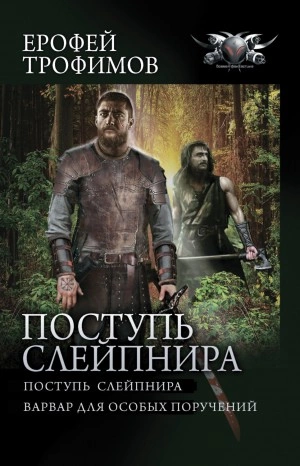Шрифт:
Интервал:
Закладка:
70
Nakamura, Jeanne, and Mihaly Csikszentmihalyi. “The concept of flow.” In Flow and the Foundations of Positive Psychology, 239–263. Dordrecht: Springer, 2014.
71
Mark, Gloria, Shamsi T. Iqbal, Mary Czerwinski, and Paul Johns. “Bored Mondays and focused afternoons: the rhythm of attention and online activity in the workplace.” Proceedings of the SIGCHI Conference on Human Factors in Computing Systems, New York: ACM Press, 3025–3034. 2014.
72
LeFevre, Judith. “Flow and the quality of experience during work and leisure.” Cambridge: Cambridge University Press, 1988.
73
Curry, David. “Candy Crush revenue and usage statistics.” Business of Apps, 2021, https://www.businessofapps.com/data/candy-crush-statistics/.
74
Sweney, Mark. “More than 9m play Candy Crush for three hours or more a day.” The Guardian, June 26, 2019, https://www.theguardian.com/games/2019/jun/26/more-than-9m-play-candy-crush-for-three-hours-or-more-a-day-addiction.
75
Mikulas, William L., and Stephen J. Vodanovich. “The essence of boredom.” The Psychological Record 43, № 1 (1993): 3.
76
Fisher, Cynthia D. “Boredom at work: a neglected concept.” Human Relations 46, № 3 (1993): 395–417.
77
Valdez, Pablo, Candelaria Ramírez, Aída García, Javier Talamantes, Pablo Armijo, and Jorge Borrani. “Circadian rhythms in components of attention.” Biological Rhythm Research 36, № 1–2 (2005): 57–65.
78
Carrier, Julie, and Timothy H. Monk. “Circadian rhythms of performance: new trends.” Chronobiology International 17, № 6 (2000): 719–732.
79
Busch, Niko A., and Rufin VanRullen. “Spontaneous EEG oscillations reveal periodic sampling of visual attention.” Proceedings of the National Academy of Sciences 107, № 37 (2010): 16048–16053.
80
Mark, Gloria, Shamsi T. Iqbal, Mary Czerwinski, and Paul Johns. “Bored Mondays and focused afternoons: the rhythm of attention and online activity in the workplace.” Proceedings of the SIGCHI Conference on Human Factors in Computing Systems, New York: ACM Press, 3025–3034. 2014.
81
Mark, Gloria, Shamsi T. Iqbal, Mary Czerwinski, and Paul Johns. “Bored Mondays and focused afternoons: the rhythm of attention and online activity in the workplace.” Proceedings of the SIGCHI Conference on Human Factors in Computing Systems, New York: ACM Press, 3025–3034. 2014.
82
◊ Здесь и далее: название социальной сети, принадлежащей Meta Platforms Inc., признанной экстремистской организацией на территории РФ.
83
Mark, Gloria, Shamsi Iqbal, Mary Czerwinski, and Paul Johns. “Focused, aroused, but so distractible: temporal perspectives on multitasking and communications.” Proceedings of the 18th ACM Conference on Computer Supported Cooperative Work & Social Computing, New York: ACM Press, 903–916. 2015.
84
Abdullah, Saeed, Elizabeth L. Murnane, Mark Matthews, Matthew Kay, Julie A. Kientz, Geri Gay, and Tanzeem Choudhury. “Cognitive rhythms: unobtrusive and continuous sensing of alertness using a mobile phone.” Proceedings of the 2016 ACM International Joint Conference on Pervasive and Ubiquitous Computing, 78–189. 2016.
85
Valdez, Pablo, Candelaria Ramírez, Aída García, Javier Talamantes, and Juventino Cortez. “Circadian and homeostatic variation in sustained attention.” Chronobiology International 27, № 2 (2010): 393–416.
86
Behrens, John. America’s Music Makers: Big Bands and Ballrooms: 1911–2011. Bloomington: AuthorHouse, 2011.
87
Metcalfe, Bob. “Microsoft and Netscape open some new fronts in escalating Web Wars.” InfoWorld, Aug. 21, 1995: 35.
88
Smith, Monica L. A Prehistory of Ordinary People. Tucson: University of Arizona Press, 2010.
89
Medeiros-Ward, Nathan, Jason M. Watson, and David L. Strayer. “On supertaskers and the neural basis of efficient multitasking.” Psychonomic Bulletin & Review 22, № 3 (2015): 876–883.
90
Poposki, Elizabeth M., and Frederick L. Oswald. “The multitasking preference inventory: toward an improved measure of individual differences in polychronicity.” Human Performance 23, № 3 (2010): 247–264.
91
Kaufman, Carol Felker, Paul M. Lane, and Jay D. Lindquist. “Exploring more than 24 hours a day: a preliminary investigation of polychronic time use.” Journal of Consumer Research 18, № 3 (1991): 392–401.
92
Cherry, E. Colin. “Some experiments on the recognition of speech, with one and with two ears.” The Journal of the Acoustical Society of America 25, № 5 (1953): 975–979.
93
Taylor, Frederick Winslow. The Principles of Scientific Management. New York: Cosimo Classics, 2010.
94
González, Victor M., and Gloria Mark. “Constant, constant, multi-tasking craziness: managing multiple working spheres.” Proceedings of the SIGCHI Conference on Human Factors in Computing Systems, New York: ACM Press, 113–120. 2004.
95
Meyer, Andre N., Laura E. Barton, Gail C. Murphy, Thomas Zimmermann, and Thomas Fritz. “The work life of developers: activities, switches and perceived productivity.” IEEE Transactions on Software Engineering 43, № 12 (2017): 1178–1193.
96
Akbar, Fatema. Stress and Human-Computer Interaction at the Workplace: Unobtrusive Tracking with Wearable Sensors and Computer Logs. Unpublished PhD dissertation, University of California, Irvine, 2021.
97
Mark, Gloria, Shamsi T. Iqbal, Mary Czerwinski, Paul Johns, and Akane Sano. “Neurotics can’t focus: an in situ study of online multitasking in the workplace.” Proceedings of the 2016 CHI Conference on Human Factors in Computing Systems, New York: ACM Press, 1739–1744. 2016.
98
Akbar, Fatema. Stress and Human-Computer Interaction at the Workplace: Unobtrusive Tracking with Wearable Sensors and Computer Logs. Unpublished PhD dissertation, University of California, Irvine, 2021.
González, Victor M., and Gloria Mark. “Constant, constant, multi-tasking craziness: managing multiple working spheres.” Proceedings of the SIGCHI Conference on Human Factors in Computing Systems, New York: ACM Press, 113–120. 2004.
Mark, Gloria, Stephen Voida, and Armand Cardello. “A
- Логистика хранения товаров: Практическое пособие - Владислав Волгин - Экономика
- Манипулирование словом в средствах массовой информации - Анна Данилова - Психология
- Экономика для "чайников" - Шон Флинн - Экономика
- Общая теория капитала. Самовоспроизводство людей посредством возрастающих смыслов. Часть вторая - А. Куприн - Периодические издания / Экономика
- Нет плохому поведению - Мишель Борба - Психология
- Аспектика - Живорад Славинский - Психология
- Аспектика. Тезисы - Живорад Славинский - Психология
- Психология рекламы - Александр Лебедев-Любимов - Психология
- Самоосвобождающаяся игра - Вадим Демчог - Психология
- Самоосвобождающаяся игра - Вадим Демчог - Психология







